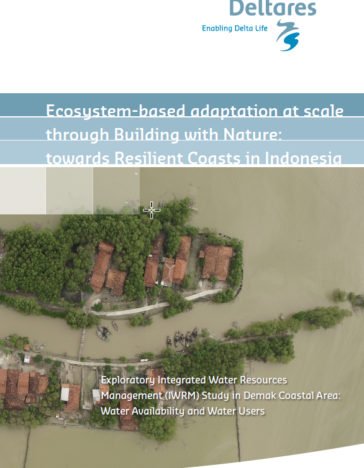
First design workshop in Semarang to develop solutions for the city’s sinking and flooding challenges
-
Aquaculture, fisheries and coastal agriculture
-
Coastal resilience
-
Coastal wetland conservation
-
Integrated delta management
Semarang, Indonesia – Indonesia and the Netherlands kick off the Water as Leverage program for Semarang, a rapidly subsiding and flooding port city on the island of Java home to 1.7 million inhabitants. The program starts on 3 and 4 September with the first of a series of design workshops in which two world-leading design teams will look into the city’s water challenges and opportunities in a climate-adaptive, innovative and inclusive way.
Wetlands International is member of the ONE Resilient Team, led by design and urban planning firm One Architecture & Urbanism (ONE) and will focus on the crucial role that wetlands play in enhancing freshwater use and management in Semarang and its watershed. At a rate of sea level rise upward of 6 mm per year, and, in some places, a subsidence rate of over 10 cm per year, Semarang finds itself in a vicious cycle where its water-related practices directly contribute to higher flood risk. In parallel, the city is rapidly expanding in at-risk areas, with lack of effective governance to adapt to ever-changing environmental conditions.
Over the coming 9 months, two teams selected by RVO (Netherlands Enterprise Agency) will be developing conceptual solutions together with local stakeholders and turn them into bankable water infrastructure projects. During the kick-off workshop on 3 and 4 September, initiator Mr. Henk Ovink, Special Envoy for International Water Affairs of the Netherlands will play a leading role.
ONE Resilient Team Members have already collaborated in Java
Many of the One Resilient Semarang team members have already collaborated in Java, including Wetlands International, Deltares and Diponegoro University (UNDIP) in the Building with Nature Indonesia project located in Demak district, adjacent to Semarang. Coastal flooding problems in Semarang and Demak are interrelated. Coming from the experiences in the Demak project, partners have learned that they need to look at the entire watershed feeding Semarang. This is because enhanced surface water management in the watershed can help reduce the groundwater depletion that is contributing to subsidence and ultimately, in combination with sea level rise and erosion, in flooding.
To expand the knowledge of the surface water system, Deltares just released their report ‘Exploratory Integrated Water Resources Management (IWRM) Study in Demak Coastal Area: Water Availability and Water Users’. In the report, demands of several water user groups from the coastal community are evaluated against the surface water supply by the river network in Demak. Possibilities are explored for availability and sustainable use of surface water in the area.
Sustainable water management can help prevent flooding
The Deltares modelling study shows that the yearly water supply from the rivers is abundant in Demak, however it is unequally distributed over space and time. The watershed has a surplus of water over the wet season and this surplus is not retained and used efficiently during the drier periods. Furthermore, most of the available river water is used in Eastern part of the province. Sustainable freshwater management and distribution is key to minimise groundwater pumping and subsidence. Since subsidence threatens long-term survival of mangrove forests, preventing this phenomenon also helps to maintain a healthy mangrove forest, which is important for coastal protection and aquaculture.

